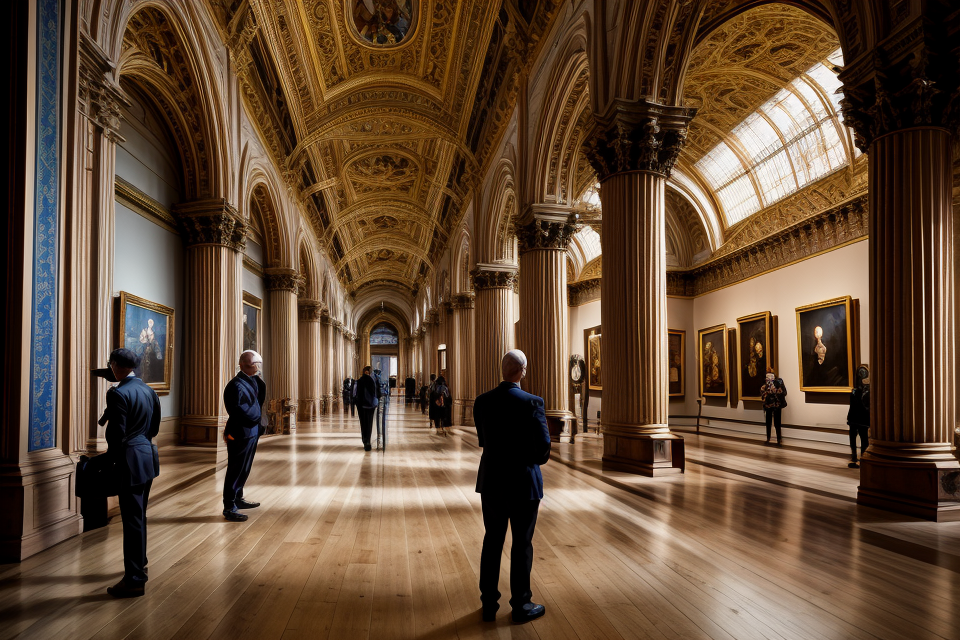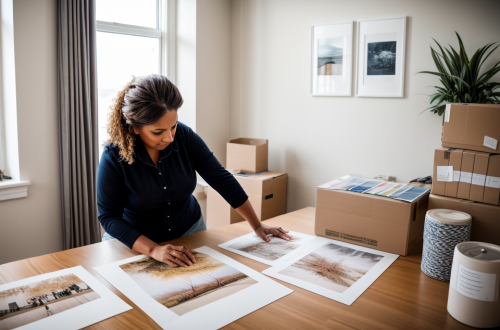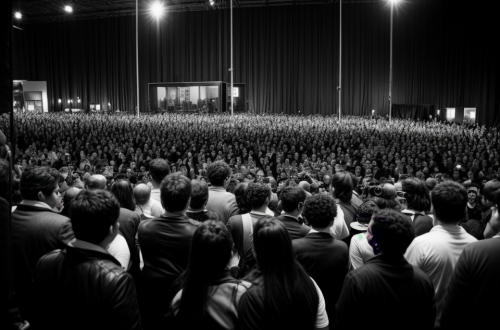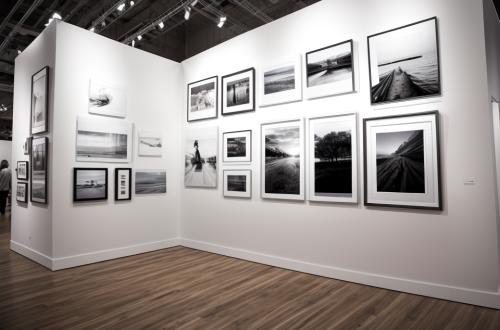Museums are treasure troves of art, history, and culture, attracting millions of visitors each year. However, one common rule that museums enforced is the ban on photography. Many people wonder why museums don’t allow photography, and this article will explore the reasons behind this ban. From protecting delicate artworks to maintaining the integrity of the exhibition, there are several valid reasons why museums prohibit photography. This article will delve into the details of these reasons, providing a comprehensive understanding of the topic. So, join us as we explore the fascinating world of museums and the reasons behind the photography ban.
Understanding the Photography Ban in Museums
Why are visitors not allowed to take photographs in museums?
Visitors are often not allowed to take photographs in museums for several reasons. These reasons are often interconnected and interdependent, and they all contribute to the overall preservation and protection of the artwork on display. Here are some of the most common reasons why photography is banned in museums:
- Preservation of Artwork: One of the primary reasons why photography is banned in museums is to protect the artwork on display. Many museums have strict rules regarding photography because they are concerned about the potential damage that could be caused by flash photography, movement, and other factors. For example, some paintings may be particularly sensitive to light, and exposure to bright flashes could cause them to fade or degrade over time. Additionally, the vibrations caused by camera flashes can be harmful to fragile sculptures and other objects.
- Copyright and Intellectual Property: Another reason why photography is banned in museums is to protect copyright and intellectual property. Many museums have strict rules regarding photography because they are concerned about the potential for copyright infringement. For example, some artists or photographers may object to having their work photographed, and they may hold the copyright to certain images. Additionally, some museums may have licensing agreements with artists or photographers that prohibit photography in certain areas of the museum.
- Safety Concerns: Finally, photography may be banned in museums due to safety concerns. Some museums have strict rules regarding photography because they are concerned about the potential for accidents or other incidents. For example, the use of tripods or other equipment may be prohibited in certain areas of the museum to prevent accidents or injuries. Additionally, some museums may have security concerns related to the use of cameras or other recording devices.
Overall, the reasons why photography is banned in museums are varied and interconnected. While some museums may be more lenient than others when it comes to photography, it is important to respect the rules and regulations of each museum to ensure the preservation and protection of the artwork on display.
The history of photography in museums
Photography in museums has a long and complex history that has led to the current ban on photography in many museums. Early museum photography policies were not as restrictive as they are today, but as photography technology advanced, museums began to place more restrictions on photography.
Early museum photography policies
In the early days of photography, museums saw the benefits of using photography to document and preserve their collections. Many museums allowed visitors to take photographs of the exhibits, and some even provided photographic equipment for visitors to use. This approach was based on the belief that photography could help to increase public interest in the museum and its collections.
Evolution of photography policies in museums
As photography technology advanced, museums began to place more restrictions on photography. One of the main reasons for this was the concern that photography could damage the artifacts on display. Museums also began to worry about copyright issues, as visitors could take photographs of the exhibits and use them without permission.
In the mid-20th century, many museums began to ban photography entirely, and this trend continued into the 21st century. Today, many museums have strict policies that prohibit photography of any kind, including cell phone photography and selfies.
The impact of digital photography on museum policies
The rise of digital photography has had a significant impact on museum policies. With the advent of smartphones and other digital cameras, it has become easier than ever for visitors to take photographs in museums. However, this has also led to concerns about the impact of flash photography on artifacts, as well as the potential for visitors to use photographs for commercial purposes without permission.
Museums have responded to these concerns by implementing stricter photography policies, including the use of signs and guards to enforce the bans on photography. Some museums have also introduced special photography tours or programs that allow visitors to take photographs under controlled conditions.
Overall, the history of photography in museums is a complex one that has been shaped by a variety of factors, including concerns about damage to artifacts, copyright issues, and the impact of digital photography. Understanding this history is essential for understanding the current ban on photography in many museums.
Types of Artwork that are typically banned from photography
Sensitive Artwork
Many museums have a ban on photographing certain types of artwork, particularly those that are considered sensitive. This includes pieces that are deemed too fragile, valuable, or culturally significant to be photographed.
- Examples of sensitive artwork that are not allowed to be photographed
- Picasso’s Guernica: This famous painting depicts the bombing of Guernica during the Spanish Civil War and is considered one of Picasso’s most powerful works. Due to its delicate condition and significance, it is not allowed to be photographed.
- The Mona Lisa: The iconic painting by Leonardo da Vinci is one of the most famous artworks in the world and is banned from photography due to concerns about damage to the painting from flashes and the risk of theft.
- Reasons for the ban on photographing sensitive artwork
- Preservation: Many museums are concerned about the potential damage that flash photography can cause to fragile artwork. The bright lights and UV rays can cause fading, discoloration, and other types of damage over time.
- Security: Some museums also ban photography due to security concerns. The risk of theft is high for valuable and culturally significant artwork, and photography can potentially be used as a tool for thieves to plan their heists.
- Cultural Significance: Some artwork has cultural significance that goes beyond its monetary value. In these cases, the museum may ban photography to protect the artwork’s spiritual or cultural significance.
Copyrighted Artwork
Copyrighted artwork refers to any artwork that is protected by copyright laws. This includes paintings, sculptures, photographs, and other forms of visual art that are created by artists who have exclusive rights over their work. In museums, copyrighted artwork is typically banned from being photographed because it is protected by intellectual property laws.
Examples of copyrighted artwork that are not allowed to be photographed include famous works of art such as the Mona Lisa by Leonardo da Vinci, The Starry Night by Vincent van Gogh, and Guernica by Pablo Picasso. These works are protected by copyright laws, and photographing them without permission is a violation of the artist’s exclusive rights.
Reasons for the ban on photographing copyrighted artwork include:
- Protecting the artist’s rights: Copyright laws grant artists exclusive rights over their work, including the right to reproduce and distribute copies of the work. By banning photography of copyrighted artwork, museums are protecting the artist’s rights and ensuring that their work is not reproduced without permission.
- Maintaining the integrity of the artwork: Photographing copyrighted artwork can damage the artwork, especially if the photographer uses flash or other equipment that can harm the surface of the artwork. Additionally, photographing the artwork can disturb other visitors and disrupt the museum’s environment.
- Preserving the museum’s collection: Many museums have strict rules about photographing their collections to prevent damage to the artwork and to maintain the integrity of the collection. By banning photography of copyrighted artwork, museums can ensure that their collections are preserved for future generations.
Loaned Artwork
One of the most common types of artwork that are banned from photography in museums are those that are on loan from other institutions or private collections. These artworks are often subject to specific terms and conditions that prohibit photography as a way of protecting the rights of the lender and preserving the integrity of the artwork.
Examples of loaned artwork that are not allowed to be photographed include:
- Famous works of art: Many famous works of art are often loaned to museums for special exhibitions, but they are not allowed to be photographed due to the terms of the loan agreement. This can include works by famous artists such as Vincent van Gogh, Pablo Picasso, and Michelangelo.
- Rare and fragile works: Some loaned artworks are rare and fragile, and therefore cannot be exposed to the risks associated with photography. This includes works made from delicate materials such as paper, textiles, or works that are in poor condition.
Reasons for the ban on photographing loaned artwork include:
- Protecting the rights of the lender: The lender of the artwork may have specific terms and conditions that prohibit photography as a way of protecting their rights. This can include concerns about copyright, trademark, or other intellectual property rights.
- Preserving the integrity of the artwork: Some loaned artworks may be subject to specific conservation restrictions that prohibit photography. This can include works that are sensitive to light, humidity, or other environmental factors that can be affected by photography.
- Maintaining the value of the artwork: Some lenders may be concerned that photography could damage the value of the artwork, either by altering its appearance or by making it more accessible to the public. This can be particularly true for works that are rare or valuable.
Overall, the ban on photographing loaned artwork in museums is a way of protecting the rights of the lender and preserving the integrity of the artwork. While it may be frustrating for visitors who are unable to capture a photograph of their favorite artwork, it is important to respect the terms of the loan agreement and to appreciate the artwork in its own right.
Museums with more relaxed photography policies
The Metropolitan Museum of Art
The Metropolitan Museum of Art (The Met) in New York City is one of the most renowned art museums in the world. Unlike many other museums, The Met has a relatively relaxed policy when it comes to photography. Visitors are allowed to take photographs in most of the museum’s galleries, with some exceptions for special exhibitions or objects that are particularly sensitive to light.
This more permissive approach to photography has several benefits. For one, it allows visitors to capture and share their experiences with others who may not be able to visit the museum in person. This can help to increase awareness and appreciation of the museum’s collections, which can in turn benefit the museum’s reputation and attendance. Additionally, the policy encourages visitors to engage more deeply with the artwork on display, as they may feel more inclined to take the time to study and appreciate a piece if they know they can photograph it.
However, there are also potential drawbacks to allowing photography in a museum setting. Some argue that the presence of cameras and flashes can be distracting or disruptive to other visitors, and that the practice of taking photographs can detract from the contemplative nature of the museum experience. Furthermore, concerns have been raised about the potential for photographs to be used for commercial purposes, such as in advertising or merchandising, without the museum’s permission.
Overall, The Met’s decision to allow photography in most of its galleries reflects a balancing act between the benefits and drawbacks of such a policy. It remains to be seen how other museums will approach this issue in the future, and whether a more permissive photography policy will become the norm in the art museum world.
The Museum of Modern Art
The Museum of Modern Art (MoMA) is one of the most famous museums in the world, located in New York City. MoMA has a more relaxed photography policy compared to other museums, which allows visitors to take photographs in most of its galleries.
MoMA’s photography policy is based on the belief that photography can be a valuable tool for engaging with art and encouraging appreciation. By allowing photography, MoMA aims to create a more accessible and inclusive environment for visitors, enabling them to capture and share their experiences with others.
One of the benefits of having a more relaxed policy is that it encourages visitors to engage with the art in a more active and personal way. By taking photographs, visitors can better understand and appreciate the art, as well as create their own unique memories and connections with the pieces on display.
Furthermore, MoMA’s policy has contributed to a sense of community and shared experience among visitors. By sharing their photographs on social media, visitors can connect with others who have also visited the museum, creating a sense of shared experience and appreciation for the art.
Overall, MoMA’s more relaxed photography policy has had a positive impact on the museum’s visitors, enabling them to engage with the art in a more active and personal way, and fostering a sense of community and shared experience.
Tips for visitors who want to take photographs in museums
When visiting a museum with more relaxed photography policies, it’s important to be mindful of the guidelines and rules in place to ensure a positive experience for all visitors. Here are some tips for those who wish to take photographs in these types of museums:
Planning your visit to maximize photography opportunities
Before you arrive at the museum, do some research to determine which exhibits or areas of the museum are open to photography. This will help you plan your visit and make the most of your time there. Consider visiting during off-peak hours to avoid crowds and maximize your photography opportunities.
Understanding the rules and guidelines for photography in museums
Be sure to read and understand the museum’s rules and guidelines for photography before you arrive. This may include restrictions on the use of flash or tripods, as well as specific areas where photography is not allowed. Some museums may also require visitors to obtain permission before taking photographs.
Being respectful of other visitors and museum staff during your visit
While photography may be allowed in certain areas of the museum, it’s important to be respectful of other visitors and museum staff. Be mindful of your surroundings and try not to disturb other visitors during their visit. If you’re using a tripod or other equipment, make sure it doesn’t obstruct the path of other visitors. Additionally, be courteous to museum staff and follow their instructions if they ask you to stop taking photographs in a particular area.
The future of photography in museums
- The impact of social media on museum photography policies
- As social media platforms continue to grow in popularity, museums are increasingly being forced to grapple with the implications of this new technology on their photography policies.
- Social media has made it easier than ever for visitors to share their experiences at museums with a wider audience, but this has also led to concerns about the potential for over-commercialization and copyright infringement.
- Museums must balance the desire to promote engagement with their collections through social media with the need to protect their intellectual property and ensure that visitors are respectful of the objects on display.
- The potential for new technologies to change the way we experience and interact with art in museums
- As technology continues to advance, there is growing interest in the potential for new technologies to enhance the museum experience.
- Augmented reality and virtual reality technologies, for example, could allow visitors to experience works of art in new and immersive ways, providing a more engaging and interactive experience.
- These technologies could also provide new opportunities for accessibility, allowing visitors with disabilities to experience art in ways that were previously not possible.
- The importance of balancing preservation and access in museum photography policies
- One of the key challenges facing museums is finding a way to balance the need to preserve their collections with the desire to make them accessible to the public.
- Photography policies are just one aspect of this broader issue, and museums must carefully consider the potential impact of their policies on both preservation and access.
- As new technologies continue to emerge, it will be important for museums to adapt their policies to ensure that they are able to strike the right balance between these competing priorities.
FAQs
1. Why do museums not allow photography?
Museums prohibit photography to protect their exhibits and collections. Many museums house valuable and fragile objects that can be easily damaged by flash photography or the physical act of taking a photograph. The bright flash of a camera can cause fading or discoloration of certain materials, such as textiles, paintings, and photographs. Additionally, the physical act of taking a photograph can cause vibrations that can further damage fragile objects.
2. What are the consequences of taking photographs in a museum?
The consequences of taking photographs in a museum can vary depending on the museum’s policies and the severity of the infraction. In some cases, museum staff may simply ask the photographer to stop taking pictures and may provide additional information about the photography policy. In more severe cases, photographers may be asked to leave the museum or may face legal consequences. It is important to respect the museum’s policies and to understand the potential consequences of breaking them.
3. Are there any exceptions to the photography ban in museums?
Some museums may allow photography in certain areas or under certain conditions. For example, some museums may allow photography in designated areas or during specific times of the day. Additionally, some museums may allow photography for personal use, but may prohibit commercial use of the photographs. It is important to check with the museum’s staff or to review the museum’s photography policy before taking any photographs.
4. Can I use my phone to take pictures in a museum?
Yes, many museums allow the use of smartphones and other mobile devices to take pictures. However, it is important to be mindful of the museum’s policies and to use the device in a way that does not disturb other visitors or interfere with the museum’s exhibits. Some museums may also have specific policies regarding the use of phones or other electronic devices.
5. Are there any other reasons why museums prohibit photography?
In addition to protecting exhibits and collections, museums may also prohibit photography for security reasons. Photography can be used as a cover for espionage or theft, and museums may not want to provide a means for individuals to document the layout of the museum or the location of specific exhibits. Additionally, some museums may prohibit photography to maintain the aesthetic experience of the museum. The bright flashes and sounds of cameras can be distracting and may detract from the overall experience of visiting the museum.





